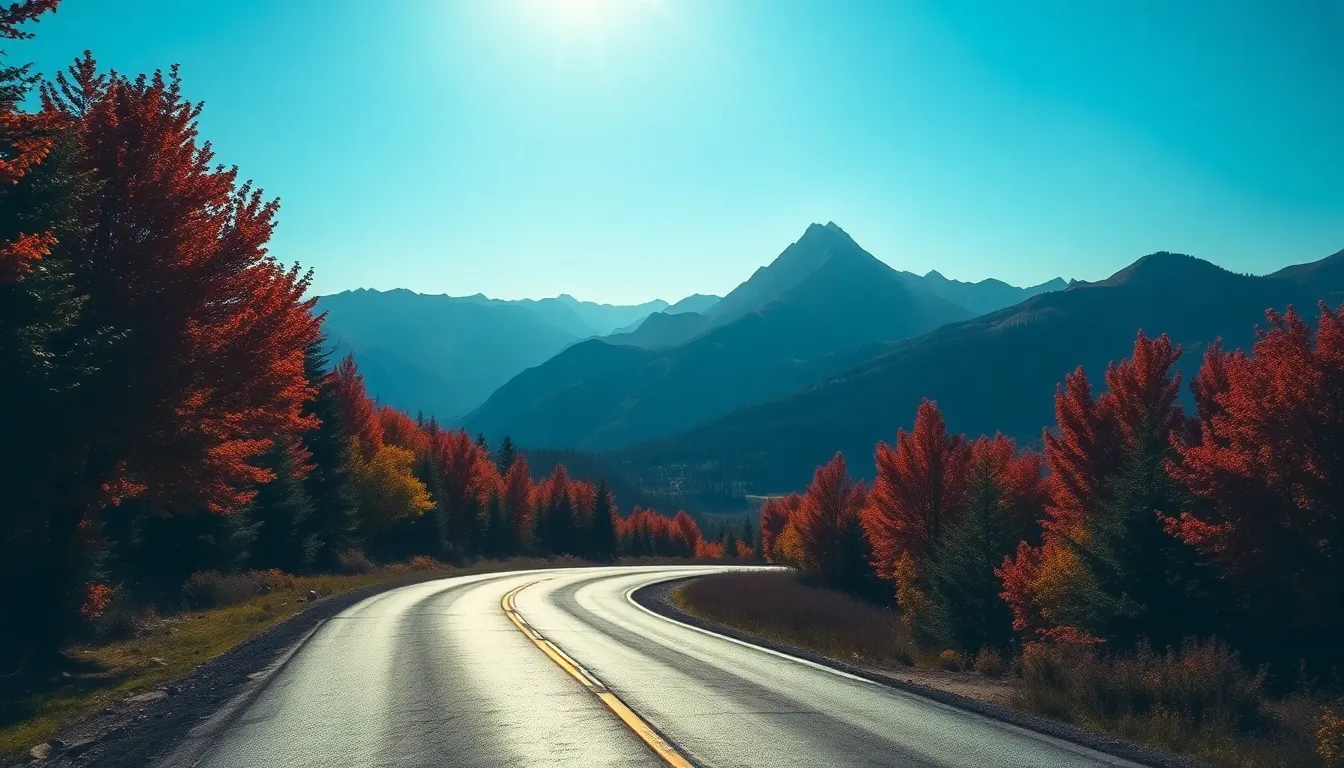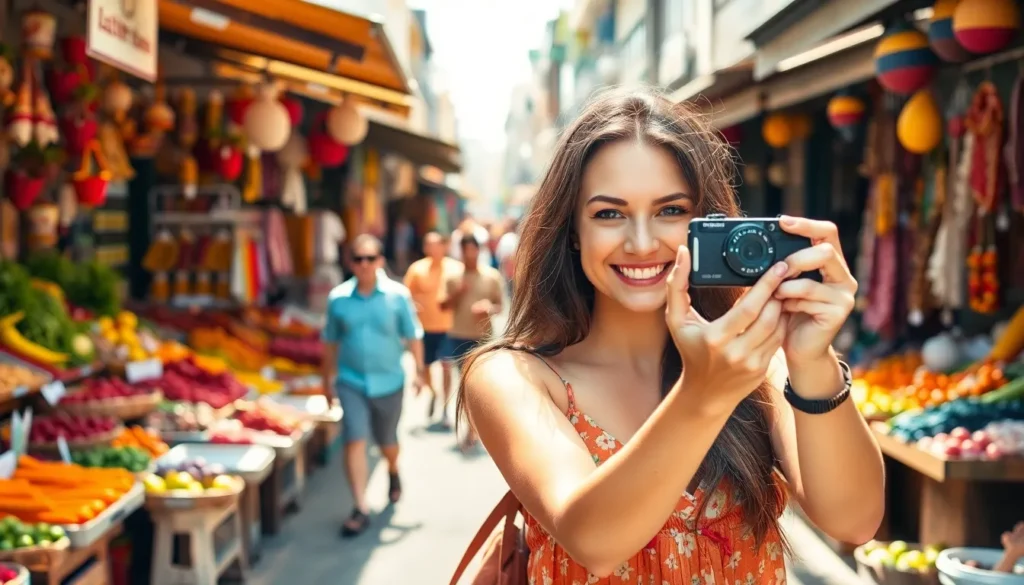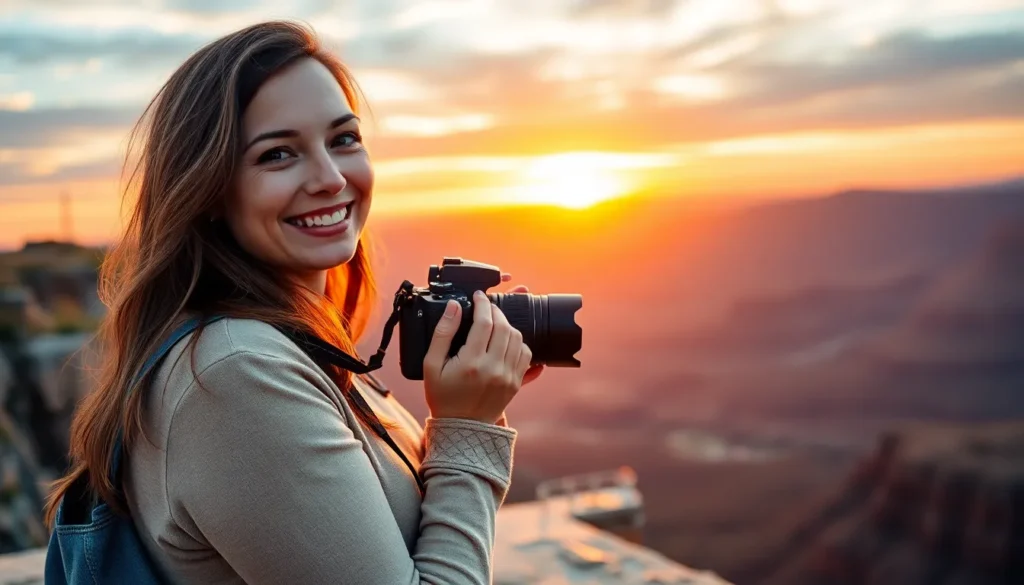Traveling opens up a world of breathtaking sights and unforgettable moments, but capturing those experiences can be a challenge. Ever looked back at your vacation photos and thought, “What was I thinking?” Fear not, because taking better travel photos isn’t just for the pros with fancy cameras. With a few simple tips, anyone can turn their snapshots into stunning memories that’ll make friends green with envy.
How To Take Better Travel Photos
Understanding camera functionality enhances travel photography significantly. Familiarity with different camera types and essential settings streamlines the process of taking great photos.
Camera Types for Travel Photography
Compact cameras offer portability for easy carrying. Mirrorless systems combine quality with lightweight designs, making them great for travel. DSLRs provide versatility with interchangeable lenses, accommodating various shooting conditions. Smartphones also suffice. Many smartphones feature advanced camera capabilities, making them convenient for quick shots. Each camera type has advantages, depending on personal preferences and travel scenarios.
Essential Camera Settings
Adjusting camera settings influences image quality. ISO controls the camera’s sensitivity to light; higher settings suit low-light environments, while lower settings work best in bright conditions. Aperture affects depth of field; wider apertures blur backgrounds, while narrower settings keep more elements in focus. Shutter speed captures motion; fast speeds freeze action, while slow speeds create motion blur. Understanding these settings enhances creativity and improves photo outcomes during travel.
Composition Techniques

Effective composition techniques can elevate travel photography significantly. Understanding these fundamentals leads to stunning travel images.
Rule of Thirds
The Rule of Thirds enhances image balance and interest. This technique involves dividing the frame into a 3×3 grid. Placing key subjects or elements along these lines or intersections draws the viewer’s eye. It creates a sense of harmony within the photo. For example, position horizons along the top or bottom grid line to emphasize the sky or foreground. Avoid centering subjects; instead, offset them to generate more dynamic compositions. This simple yet powerful rule transforms ordinary photos into captivating visuals.
Leading Lines
Leading Lines guide the viewer’s eye through the photograph. These lines can be natural, like roads or rivers, or architectural, like bridges or pathways. Incorporating leading lines can create depth and perspective in travel photos. They lead attention toward focal points, making the composition more engaging. For instance, capturing a winding path that leads to a distant landmark creates a sense of journey. These lines encourage viewers to explore the image, making it visually appealing and narratively compelling. Using leading lines effectively connects the viewer with the travel experience.
Lighting in Travel Photography
Lighting plays a crucial role in capturing impactful travel photos. Understanding how to use light effectively can dramatically improve image quality.
Golden Hour
Golden hour refers to the period shortly after sunrise and before sunset. During this time, light becomes softer and more diffused, creating warm hues that enhance photographs. Photographers often notice how shadows lengthen and add interesting textures to images. Scheduling outdoor shoots during golden hour provides a magical quality absent in harsh midday light. Planning travel itineraries to coincide with these hours optimizes opportunities for breathtaking shots, especially landscapes and portraits.
Using Natural Light
Using natural light benefits travel photography significantly. Direct sunlight can create contrast and highlight details, while overcast skies provide even lighting. Positioning subjects in the shade can soften shadows and reduce glare. Observing the direction of light reveals opportunities for striking compositions. Balancing exposure helps maintain detail in both highlights and shadows. Adapting to changing light conditions encourages creativity, allowing photographers to capture unique moments throughout their travels. Embracing natural light enhances the storytelling aspect of each photo taken.
Creative Angles and Perspectives
Exploring unique angles and perspectives can transform ordinary travel photos into stunning visuals. Experimenting with different heights adds drama and interest to images.
High and Low Angles
High angles capture a broader scene, providing context and showcasing surroundings. Birds-eye views often highlight landscapes or busy streets, bringing a fresh perspective. Low angles emphasize height and grandeur, giving subjects, like buildings or statues, a commanding presence. Using these angles injects energy into photos and changes how viewers perceive the composition.
Unique Framing Techniques
Creative framing techniques draw attention to focal points and enhance storytelling. Utilizing natural frames, such as doorways or windows, guides the viewer’s eye and adds depth. Another approach, including elements in the foreground, creates interest and layers within the image. Framing the subject against vibrant backdrops can heighten contrast and make the subject pop. Implementing these methods enriches the travel photography experience and engages viewers.
Post-Processing Tips
Post-processing enhances travel photography, ensuring images capture the essence of experiences. Understanding editing can elevate snapshots significantly.
Editing Software to Use
Various editing software options cater to different skill levels. Adobe Lightroom allows for comprehensive adjustments, appealing to both beginners and professionals. Photoshop offers advanced features for detailed retouching, making it suitable for intricate edits. Snapseed, a user-friendly mobile app, provides essential editing tools for on-the-go adjustments. Canva simplifies the design process, enabling quick enhancements and sharing. Exploring multiple software options can help photographers find the best fit for their workflow.
Common Edits for Travel Photos
Photographers often employ specific edits to improve image quality. Adjusting brightness enhances detail visibility. Cropping images can eliminate distractions, allowing the main subject to stand out. Increasing contrast adds depth and definition, making colors pop. Saturation adjustments enhance vibrancy, while sharpening refines edges for clarity. Lastly, applying specific filters creates consistent styles across a series of travel images. These common edits transform snapshots into captivating memories.
Conclusion
Improving travel photography is all about practice and creativity. With the right techniques and understanding of camera settings anyone can capture stunning images that tell a story. Embracing composition rules like the Rule of Thirds and experimenting with angles can add depth and interest to photos.
Utilizing natural light during the golden hour can transform ordinary scenes into breathtaking visuals. Finally post-processing plays a vital role in enhancing those captured moments. By applying simple edits anyone can elevate their travel images and create lasting memories that inspire others. With these insights in hand travelers are well-equipped to take their photography to the next level.



